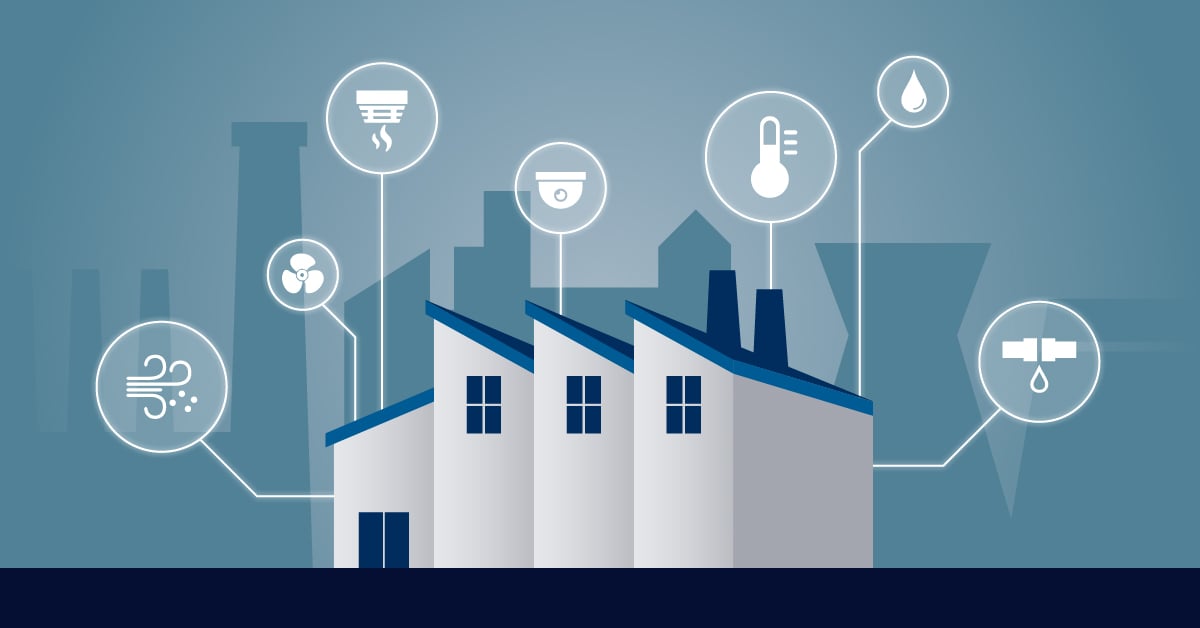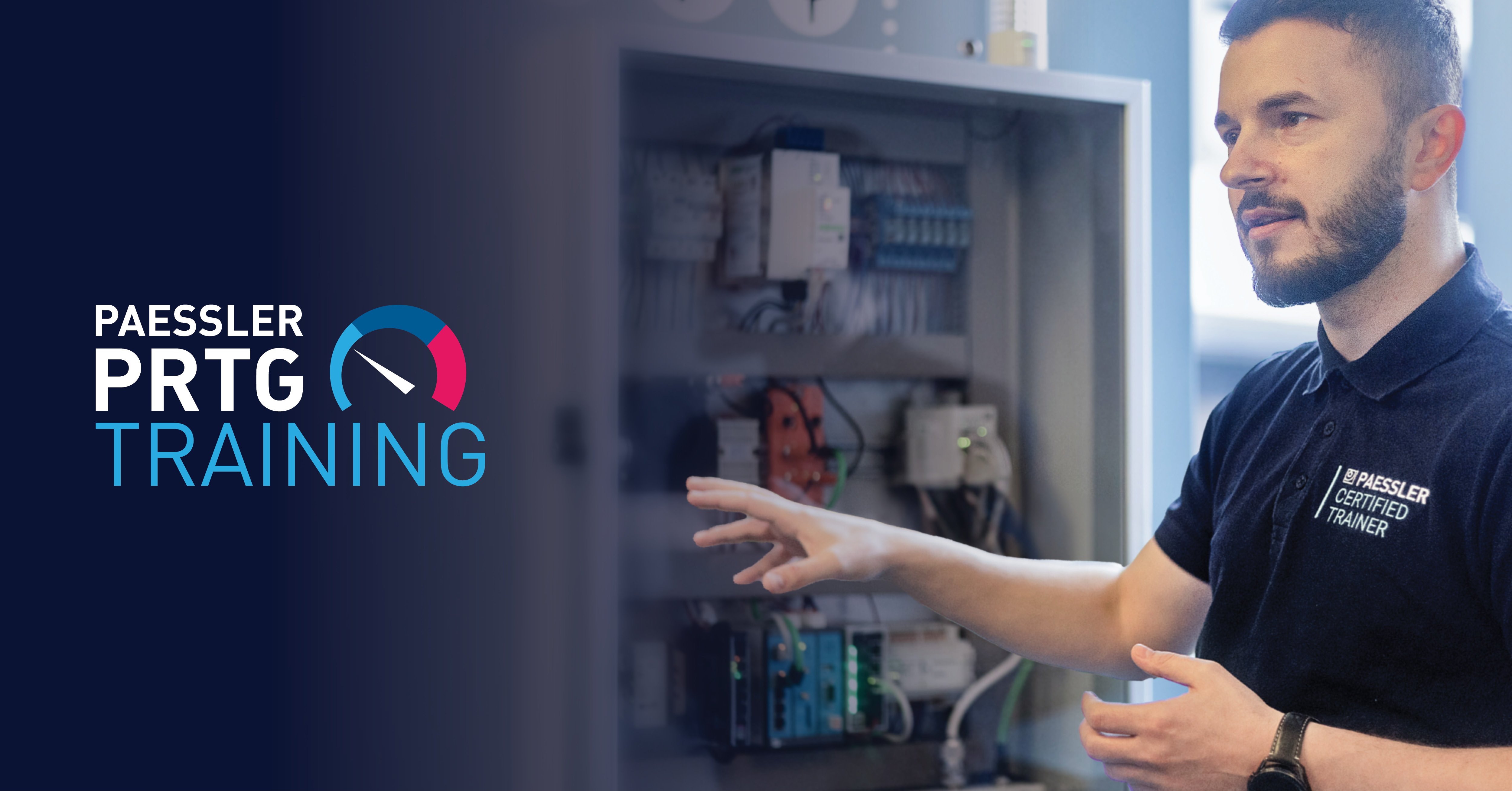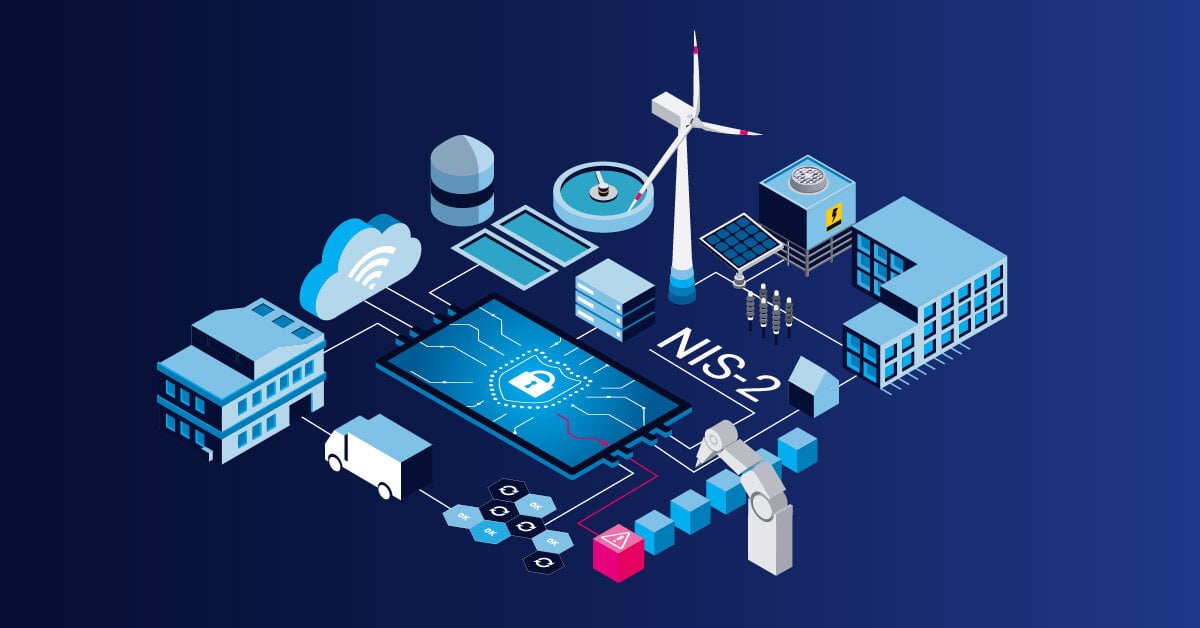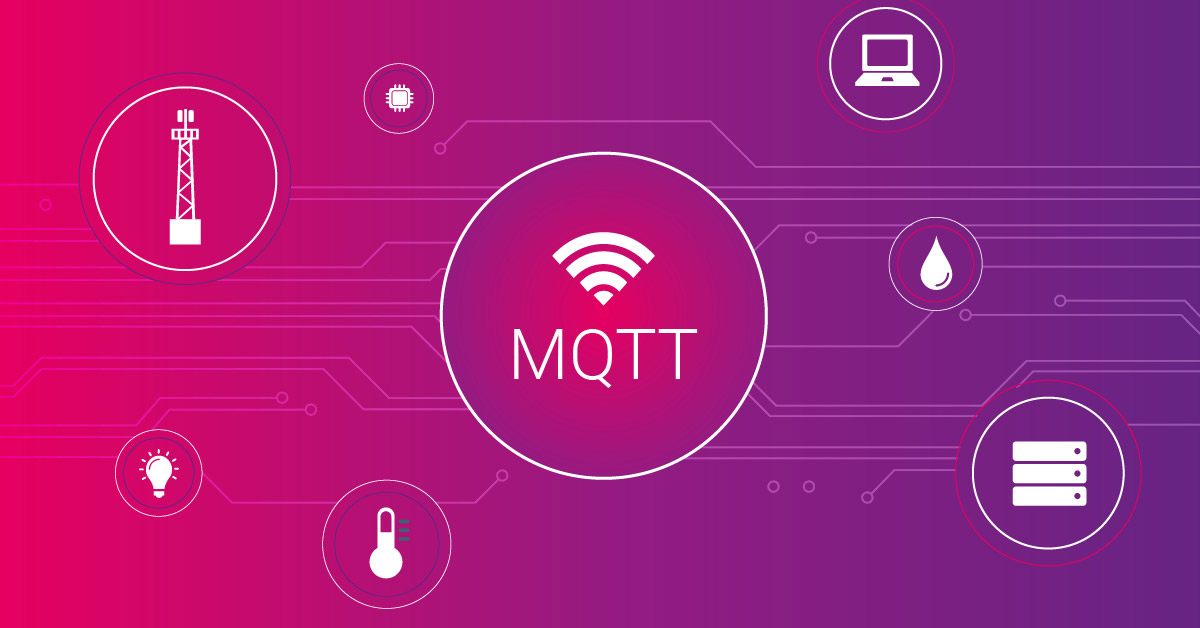The Industrial Internet of Things is everywhere in Industry 4.0: the modern industrial plant has IIoT sensors in just about every corner. Whether that be a single machine on the factory floor or an entire HVAC system, there is a sensor to monitor it. Like other components of your industrial infrastructure such as OT and IT, IoT sensors also need to be monitored. We will be looking at monitoring industrial IoT sensors, but first let's take a closer look at what we mean by the IIoT, common use cases for IIoT sensors and typical architecture.
What is the IIoT?
iWhat is IIoT?
The IIoT refers to the Industrial Internet of Things and represents the interconnection of devices in the industrial environment. The IIoT is a subcategory of the broader IoT or Internet of Things. The key difference of devices connected to IIoT networks is that they transfer data in real-time without requiring human-to-human or human-to-computer interaction. Instead, devices on IIoT networks are connected to gateways, which are physical servers that filter data and transmit it to other devices and software applications for real-time processing. Read more
In the strictest definition, the IIoT is the IoT…but for industry. This can be interpreted as IoT devices specialized for industry-specific applications, commonly found in factories or industrial plants. These sensors and IIoT devices can measure and monitor temperatures of machines with temperature sensors, status of a production process, or the environmental conditions inside an industrial enclosure using smart sensors. Because manufacturing and production needs are so varied, IIoT use cases are too.
Industrial IoT sensors can be like their commercial cousins in Smart Homes and office buildings, but there are characteristics that set them apart. For one, industrial IoT sensors must be very accurate. When the variation of just a fraction of a degree Celsius or few millimeters can result in an unusable end product, precise measurements are needed about the status of machines or the environment to best optimize operations.
Another key characteristic is that many IIoT devices are adapted to function in the conditions commonly found in plants and other industrial environments: for instance, offshore oil rigs where there is high moisture in the air or on factory floors where excessive vibrations are common. Industrial IIoT sensors are often required to be dust-resistant, shock-resistant, water-resistant, heat-resistant and, well, every other "-resistant" word you can think of.
Here are common IIoT sensor types found in industrial environments:
| Sensor type | Description |
| Motion sensors | Sense and measure the movement of objects or people |
| Acceleration sensors | Detect a change in velocity of an object |
| Gyroscopic sensors | Detect and measure rotation of an object |
| Vibration sensors | Monitor mechanical vibrations for condition monitoring |
| Environmental sensors | Measure temperature, barometric pressure, humidity, etc. |
| Temperature sensors | Monitor thermal conditions across industrial applications |
| Level sensors | Track fluid or material levels in tanks and containers |
| Gas sensors | Detect hazardous gases and monitor air quality |
| Proximity sensors | Detect the presence of nearby objects without physical contact |
| Location tracking sensors | Track the geographic location of an object |
| Pressure sensors | Measure force per unit area |
Industrial IIoT architecture
Typically the architecture for industrial technology environments has IIoT sensors sending their data to an edge computing gateway. Sensors can transmit data over a wired connection, but this is usually done wirelessly using low-power communication protocols. The protocols can range from cellular technologies (4G and 5G) to low power wide-area network (LPWAN) technologies, depending on factors such as where sensors are located, how often they are sending data and how much energy they are able to consume.
Edge computing gateways gather data and, if necessary, change the protocol to enable the real-time data to be sent to ERP and other analytic systems. The IIoT data ecosystem as a whole enables connections between IIoT devices and enterprise systems to work seamlessly together.
What is the IIoT used for?
The obvious answer as to what the IIoT is used for is to collect data. The industrial internet of things sensorscollect data from machines, buildings and vehicles. The real-time data that is gathered is fed into analytics software that is then used to manage and optimize operations.
The data from IIoT sensors are used to help make better decisions, based on valuable insights and information. Here are some of the most common examples:
| Purpose | Description |
| Predictive maintenance | Historical and real-time data is used to help engineers and technicians know when to service machines and other equipment to help prevent equipment failure. A simple example would be if a machine normally needs servicing after a certain number of rotations of its motor, then counting the total rotations over time will be able to indicate the best time to perform maintenance — ideally before a problem occurs and forces downtime to occur. For a more complex use case: here is a great real-world example about how Caterpillar is using sensors on ships: IoT And Big Data At Caterpillar: How Predictive Maintenance Saves Millions Of Dollars |
| Automation of processes | Automation means that certain tasks or actions are automatically completed in certain scenarios based on the inputs received from the factory floor and other parts of the industrial operation. Implementing automation, though, requires data that the IIoT sensors can collect and provide to automation processes and robotics systems. |
| Facilities management | Collecting and monitoring data about the building of the factory can help to determine when building maintenance is required, prevent damage (such as from gas or water leaks) and manage resources, like the energy consumption of the facility, using smart sensors. |
| Reducing energy consumption | IIoT sensors are often used to measure the power consumption of individual machines or entire electrical circuits. Once this data is collected, strategies can be implemented to become more energy efficient in operation and optimize operations. |
| Measuring environmental metrics | Operating certain machinery sometimes requires the environment to meet certain metrics. Specialized environmental IIoT sensors can measure and monitor temperature, humidity sensors readings, barometric pressure, air quality, and more. This data is collected and required for use cases where environmental conditions are expected not to exceed certain thresholds. |
| Retrofitting older machines | Factories and plants may be in the process of digitalization, but that doesn't mean that all machines are brand new. It may make sense to instead update some older machines, rather than buy new ones. IIoT sensors can be used to make old machines "smart" by collecting and transmitting data about them to achieve advancements in legacy equipment. |
| Ensuring safety |
Gas sensors and other IIoT sensors can detect and measure hazardous conditions, such as gas leaks, poor air quality, smoke and more, to help with condition monitoring for the safety of workers. |
Monitoring IIoT Sensors
Due to their critical role in industrial applications, IIoT sensors require monitoring to ensure continued operations and data collection. There are several proven approaches for monitoring IIoT sensors.
Protocol-Based Monitoring Approaches
MQTT Protocol Monitoring
MQTT (Message Queue Telemetry Transport) is a popular protocol to use for IIoT sensor communications, due to the lightweight design and use of publish-subscribe architecture. Monitoring MQTT-based sensors, therefore, can include:
- Monitor MQTT broker availability and connection health
- Track message volumes and real-time data flow patterns across topics
- Set up alerts for missed messages or connection failures

The typical architecture in these cases has sensors publishing real-time data to MQTT topics, with the monitoring system subscribing to MQTT topics for health checks and data collection.
OPC UA Integration
OPC UA is a standard of communication for modern industrial automation. The value in this protocol, in particular, is that it also defines the data and how it is structured as well. Therefore it is simple to connect securely to industrial control systems and monitor connected sensor networks with standard interfaces that have built-in security features and are highly scalable. It is designed for industrial communication networks, which makes it especially useful for mixed vendor environments supporting IIoT solutions.
HTTP Push Data Collection
Many modern IIoT sensors can push sensor data using HTTPS requests. This has several key benefits:
- Triggering data collection through webhooks
- JSON or XML-formatted data
- Secure TLS-encrypted communication
- Real-time data delivery with minimal latency
Building a complete solution for IIoT sensor monitoring
Monitoring just the data your IIoT sensors are transmitting is only part of the solution. IIoT sensors themselves also need to be monitored. This involves both sensor health as well as data quality monitoring.
Sensor health monitoring of devices and gateways
Sensor Health Monitoring of devices themselves focuses on connection status, health of communication protocols such as MQTT broker connectivity, and reliability of data transmissions. Monitoring edge computing gateway performance is equally important, as these often serve as aggregation points for IoT data in the IIoT landscape.
Data quality monitoring
Monitoring the quality of the sensor data received, you will want to validate sensor readings, check data completeness and validate data ranges. Environmental parameters that might also affect the readings are also monitored. For example, humidity sensors installed outdoors may have to have different validation ranges during different seasons.
Infrastructure monitoring
Infrastructure monitoring of the IIoT ecosystem can cover several areas:
- Network connectivity between IIoT sensors and edge computing gateways
- Performance of edge computing devices
- Protocol-specific infrastructure, such as MQTT brokers, OPC UA servers
- Power and environmental conditions where IIoT devices are operating
Unified IIoT sensor monitoring with IT/OT monitoring integration
In addition to the protocols, monitoring, and sensor details above, a unified approach is often recommended which combines IIoT sensor monitoring with broader industrial infrastructure monitoring. This unified approach gives the correlation capabilities between sensor data and IT/OT system performance, so you can tell when sensor problems are caused by more general infrastructure issues that affect the production line as a whole.
Centralized alerting also becomes more important with a large number of industrial IoT sensors being monitored at the same time. Dependencies between sensors and their supporting infrastructure should be considered when managing alerts to prevent alert storms in certain scenarios like network outages. Monitoring should also have scalable architecture design to handle as your industrial digitalization expands to bring the most benefits of the IIoT.
PRTG Network Monitor provides specialized sensors for each of the approaches listed above, providing native support for MQTT, OPC UA, HTTP push data, and even traditional industrial protocols. This complete set of industrial IIoT sensors enables monitoring of your entire IIoT environment from a single monitoring platform.
See our industrial IT monitoring solution for more information and step-by-step instructions about implementing IIoT monitoring that is specific to your industrial environment.
Monitoring IIoT sensors
So, now that you understand what IIoT sensors are, how they are used, and how to monitor them, it is time to implement the monitoring. Whether you are monitoring environmental sensors in pharmaceutical manufacturing, vibration sensors in heavy industry or temperature sensors in food processing, the best IIoT solutions will scale with you as you progress with your industrial automation.
Ready to explore how comprehensive IIoT sensor monitoring can transform your industrial applications? Start a free 30-day PRTG trial today and see specialized IIoT monitoring capabilities designed for modern industrial monitoring.
Questions about implementing IIoT sensor monitoring in your environment? Get in touch with out industrial monitoring specialists and we will help you design the best approach to take for your specific protocols and infrastructure.
 Published by
Published by 





.jpg)






